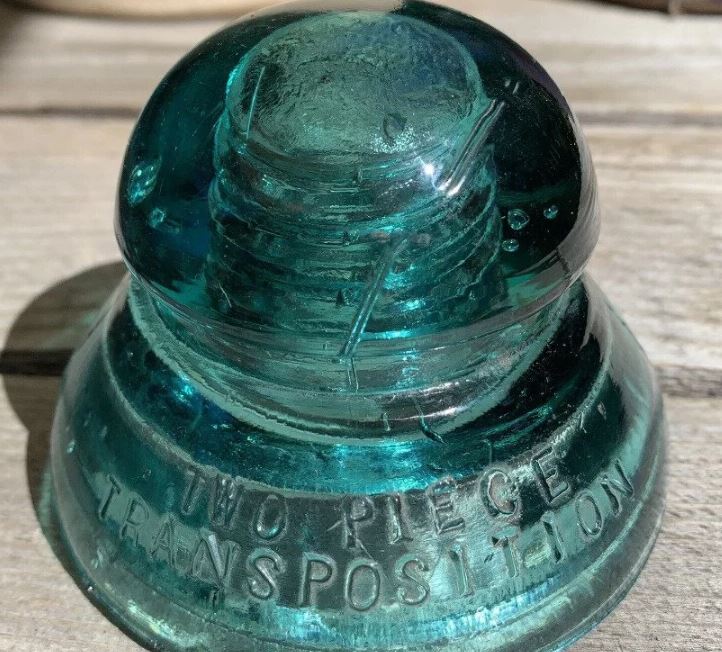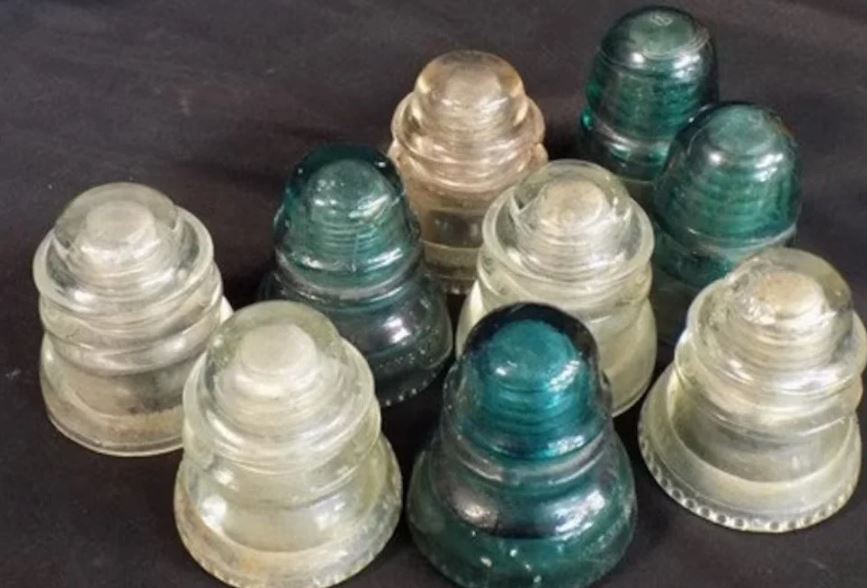Brace yourself, as I'm about to unveil the mysteries surrounding these unsung heroes of the communication realm.
Known as insulators, these peculiar contraptions serve a crucial function.
Their primary role is to prevent the electrical wires they support from making unwanted contact with the pole or, worse yet, the ground below.

Without them, electricity (or those precious telephone conversations) would simply dissipate. Imagine attempting a long-distance call only for your voice to fizzle out after a few hundred feet. Not a pleasant scenario, right?
An array of insulator styles and colors awaits discovery.
While many older models were crafted from glass or porcelain, some were fashioned from wood and glass, animal parts (yes, you read that correctly), and even more unconventional materials. Size also matters – smaller insulators catered to telephone and telegraph wires, while larger ones mingled with high-voltage electrical lines. It's akin to a VIP section for insulators, contingent upon voltage!
In the realm of power lines, the size of the insulator corresponds to the voltage. Why? Because electricity can be rather ostentatious, and if the voltage is high enough, it might attempt to jump over considerable distances – a phenomenon dubbed "flashover."

Insulators with broad "umbrella" disks and wide lower skirts act as nightclub bouncers, ensuring wires maintain a safe distance from the pole, thus averting this electrifying maneuver.
Believe it or not, insulator collecting is a bona fide hobby!
The trend gained momentum in the 1960s when utility and power companies began burying their wires. Many vintage insulators were left out of the underground festivities and found themselves in the discard pile. However, as the saying goes, one person's trash is another's treasure.
Collectors come from diverse backgrounds. Some are drawn to the aesthetics, using colorful glass pieces to adorn their windowsills and gardens, adding a dash of sparkle to their surroundings.
Others are more discerning, seeking out specific types of insulators. Prices vary widely, ranging from mere pennies to staggering sums. Rare specimens can fetch tens of thousands of dollars, yet there are also plenty of affordable options. You might stumble upon one for less than a dollar or, if luck is on your side, even snag a freebie at flea markets.
It's worth noting that the majority of insulators in collectors' hands are between 70 and 145 years old, with some types out of production since the early 1900s. Anything old and out of production tends to become a collectible, and insulators are no exception.
So, the next time you spy one of those quirky glass or porcelain insulators perched atop a telephone pole, take a moment to acknowledge the pivotal role they've played in the history of communication.
While they may appear as relics of yesteryear, they've indelibly shaped our ability to connect with one another, whether through a phone call or lightning-fast text message. Who knows, you might even feel compelled to embark on your own collection journey, joining the ranks of insulator enthusiasts who find beauty and history in these humble artifacts.






